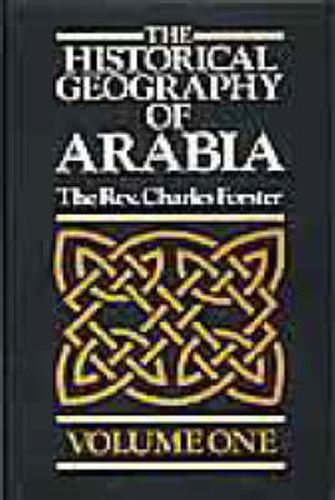Readings Newsletter
Become a Readings Member to make your shopping experience even easier.
Sign in or sign up for free!
You’re not far away from qualifying for FREE standard shipping within Australia
You’ve qualified for FREE standard shipping within Australia
The cart is loading…






This title is printed to order. This book may have been self-published. If so, we cannot guarantee the quality of the content. In the main most books will have gone through the editing process however some may not. We therefore suggest that you be aware of this before ordering this book. If in doubt check either the author or publisher’s details as we are unable to accept any returns unless they are faulty. Please contact us if you have any questions.
Originally published in 1844, also in two volumes, 'The Historical Geography of Arabia' is now an important document in the historical development of Christian theological study. With the rapid expansion of European interest in the Middle East during the nineteenth century, the Christian Church discovered a reawakened interest in the lands from which its religion had sprung. At the same time, closer contacts with the Muslim faith produced in many Churchmen the need to reassert their own faith and to seek for proofs of the foundations of their religion in its Old Testament setting. In Arabia, it was believed, resided the very roots of Christianity, hidden for centuries by the desert sands but now revealed to explorers and questing theologians. 'We may now know, in their own handwriting, what the earliest post-diluvian men and nations thought, and felt, and believed, not merely about this life...but about God, about religion.' It is to the study of these 'post-diluvian' men, their settlements and their ancient inscriptions that the Rev. Forster devotes much of his work: 'If I may resume briefly the eivdences here in question...their amount is this: in the Adite monument at Hisn Ghorab stands registered the incontrovertible fact, that the oldest monument in the world contains, at once, the fullest, and purest declaration of the great central truth of the Gospel. ..' Such evidence, and the conclusion reached by the author, are here republished in facsimile.
$9.00 standard shipping within Australia
FREE standard shipping within Australia for orders over $100.00
Express & International shipping calculated at checkout
This title is printed to order. This book may have been self-published. If so, we cannot guarantee the quality of the content. In the main most books will have gone through the editing process however some may not. We therefore suggest that you be aware of this before ordering this book. If in doubt check either the author or publisher’s details as we are unable to accept any returns unless they are faulty. Please contact us if you have any questions.
Originally published in 1844, also in two volumes, 'The Historical Geography of Arabia' is now an important document in the historical development of Christian theological study. With the rapid expansion of European interest in the Middle East during the nineteenth century, the Christian Church discovered a reawakened interest in the lands from which its religion had sprung. At the same time, closer contacts with the Muslim faith produced in many Churchmen the need to reassert their own faith and to seek for proofs of the foundations of their religion in its Old Testament setting. In Arabia, it was believed, resided the very roots of Christianity, hidden for centuries by the desert sands but now revealed to explorers and questing theologians. 'We may now know, in their own handwriting, what the earliest post-diluvian men and nations thought, and felt, and believed, not merely about this life...but about God, about religion.' It is to the study of these 'post-diluvian' men, their settlements and their ancient inscriptions that the Rev. Forster devotes much of his work: 'If I may resume briefly the eivdences here in question...their amount is this: in the Adite monument at Hisn Ghorab stands registered the incontrovertible fact, that the oldest monument in the world contains, at once, the fullest, and purest declaration of the great central truth of the Gospel. ..' Such evidence, and the conclusion reached by the author, are here republished in facsimile.